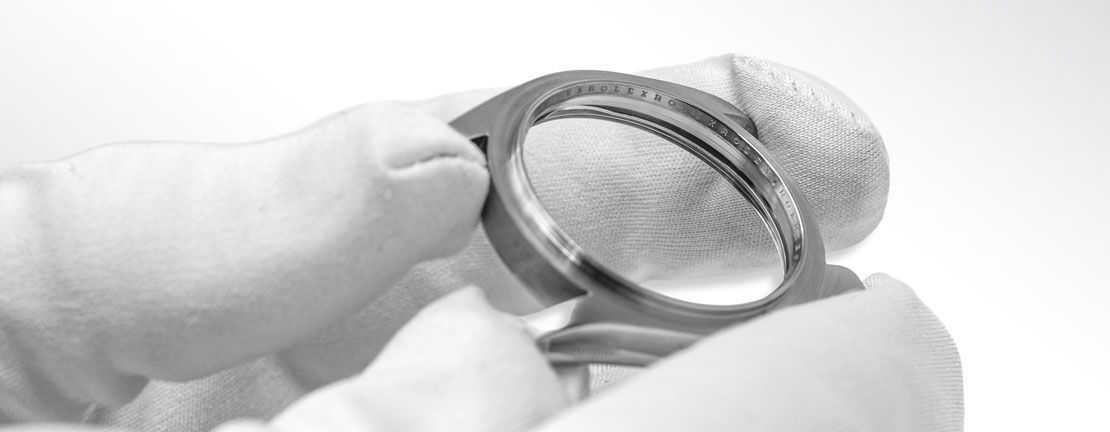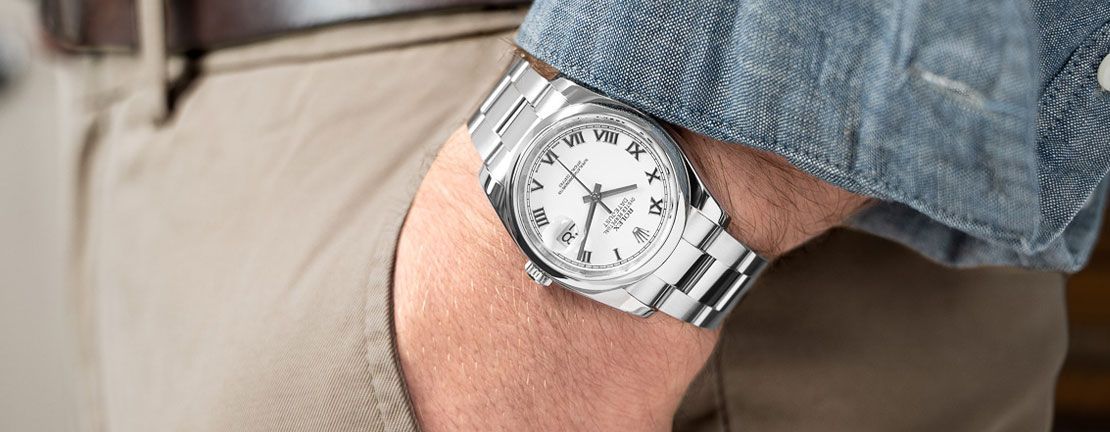Are you studying the Datejust before a purchase—or just curious how Rolex packs so much engineering into a classic dress watch? The labeled diagrams below reveal every visible (and hidden) component of the case, bracelet, and automatic movement. Use this walkthrough to understand service jargon, spot authenticity cues, and appreciate the design choices that have kept the Datejust in production since 1945.
Want to learn more about the Rolex Datejust? Click here.


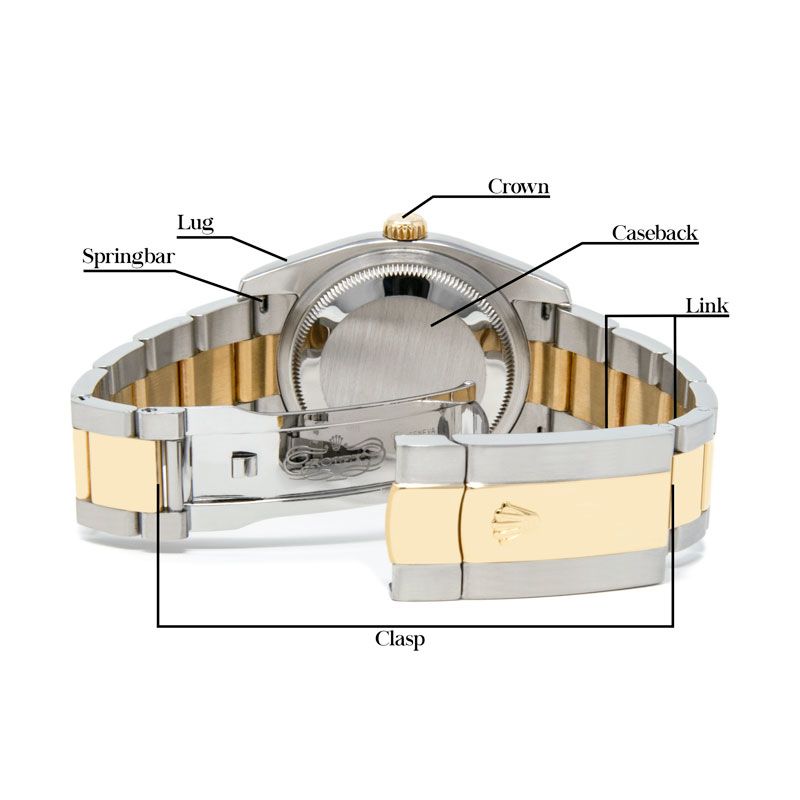

Rolex Datejust 36mm 116233 Model
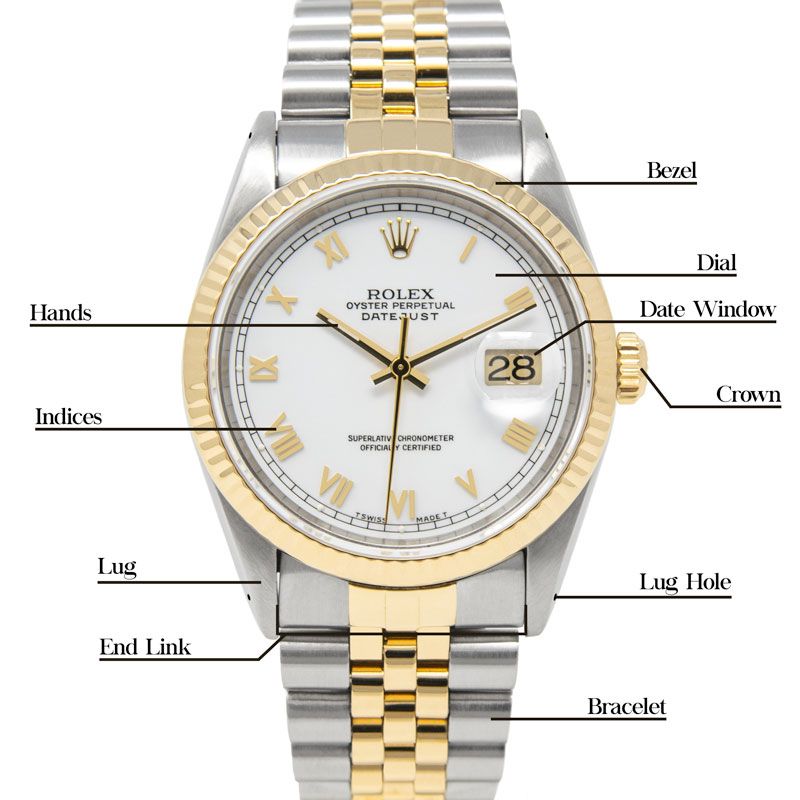

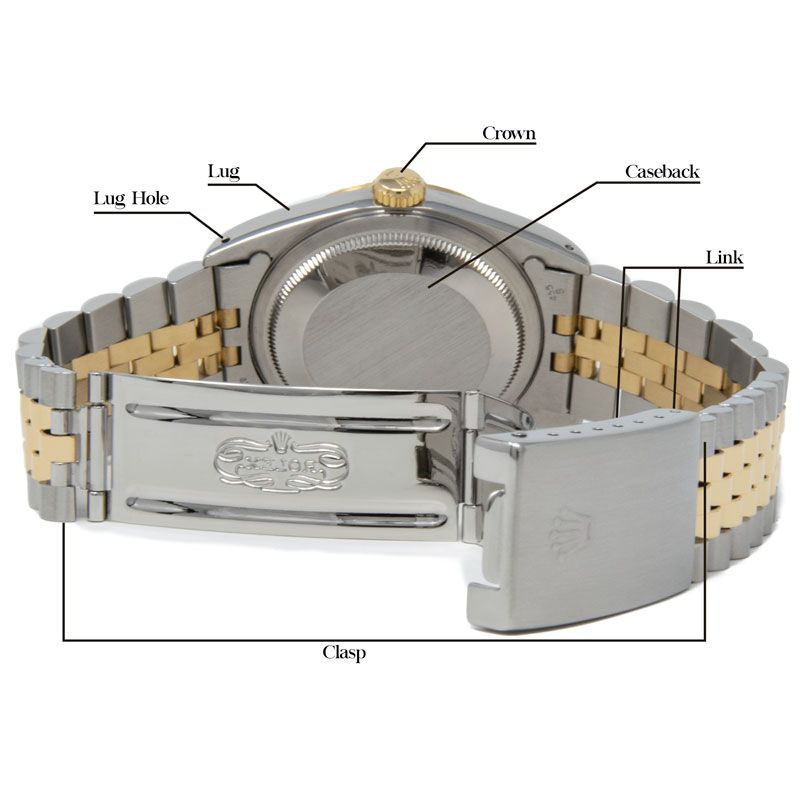

Rolex Datejust 36mm 16233 Model (Holes Case)
Rolex Datejust Case and Bracelet Diagram
Case & Bracelet Highlights
- Bezel – Fluted or smooth; presses the Crystal against the gasket and creates the Datejust’s signature light play.
- Dial – The “face” of the watch; on a Datejust it often carries applied Roman or stick Indices and the brand’s coronet at 12 o’clock.
- Hands – Hour, minute, and sweeping seconds hands; should reach precisely to their minute track markers.
- Indices – Applied hour markers (baton, Roman, or diamond); crisp edges and even lume plots help confirm originality.
- Date Window – Cut-out at 3 o’clock paired with a Cyclops lens for 2.5× magnification of the date.
- Crown – Screws into the Tube for 100 m water-resistance; look for a sharp coronet and smooth threading.
- Lug & Springbar – Solid Lugs house the Springbar that secures the Bracelet; any gap here can hint at replaced parts.
- End Link – The first Bracelet segment; should sit flush with the Lug and match the metal finish.
- Bracelet – Usually Jubilee or Oyster; check for even stretch and matching reference codes on the inner Clasp.
- Clasp – Folding blades and safety lock; interior stamps confirm production month and year.
- Link – Individual Bracelet links; excessive play suggests wear.
- Caseback – Screw-down back that seals the Movement; modern steel Datejusts have a smooth, un-engraved finish.
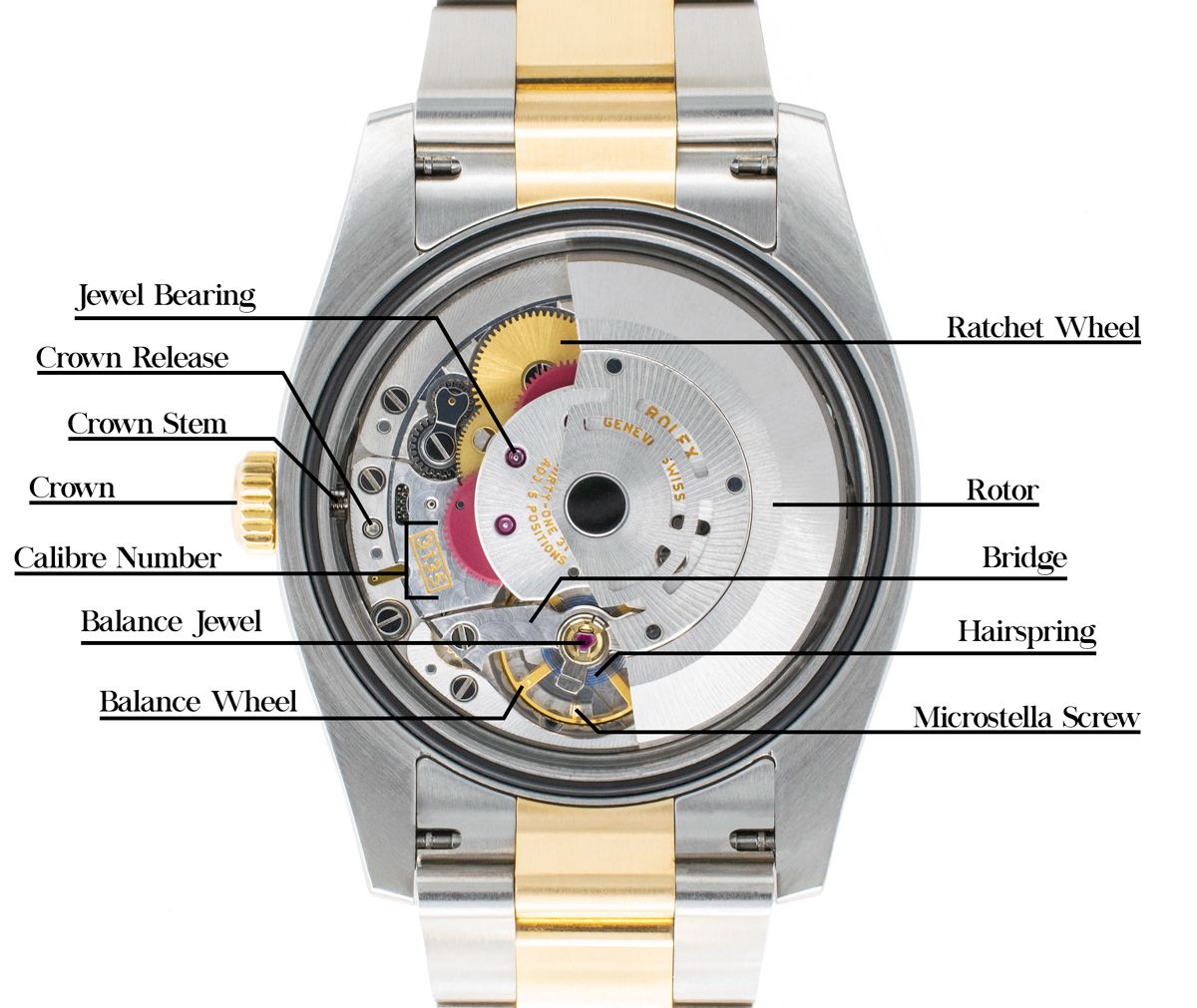

Rolex Datejust 36 116233 Wristwatch 3135 Movement (Parachrom Bleu Hairspring)
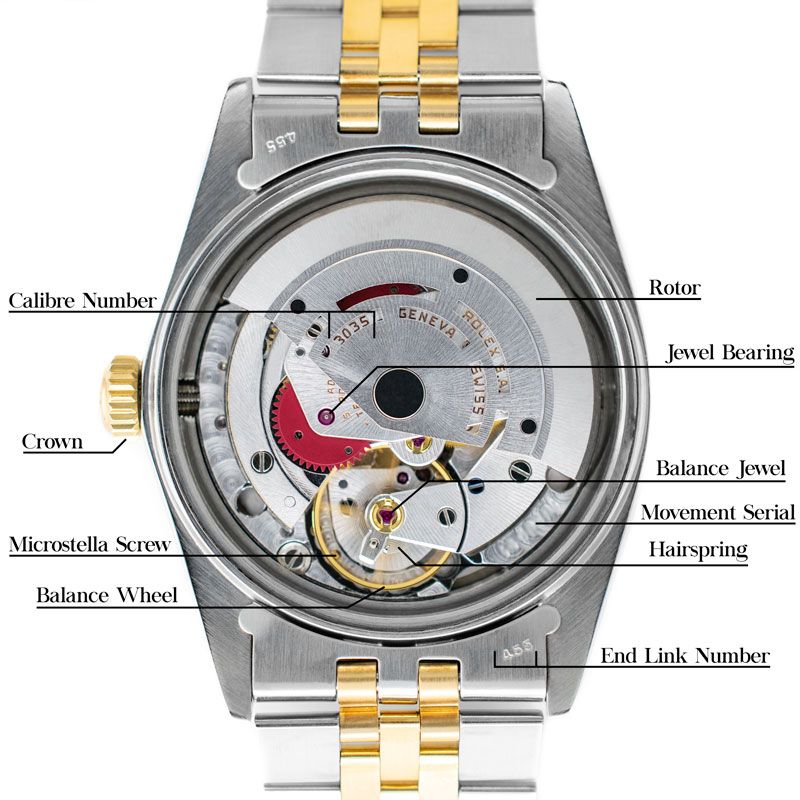

Rolex Datejust 36 16013 Wristwatch 3035 Movement (Holes Case)
Rolex Datejust Movement Diagram
Inside the Movement (Calibres 3135 & 3235)
- Rotor – The semicircular weight that swings with wrist motion to wind the mainspring automatically.
- Ratchet Wheel – Sits atop the barrel; advances each time the mainspring is wound, storing energy.
- Bridge – Rigid plate that secures gear-train wheels and the automatic winding module in place.
- Jewel Bearing – Synthetic ruby sleeve that reduces friction at high-speed pivot points.
- Crown Release – Lever that lets a watchmaker detach the winding Crown and Stem during servicing.
- Crown Stem – Steel rod linking the external Crown to the keyless works inside the movement.
- Crown – External winding and setting knob; seals against moisture when screwed down.
- Calibre Number – Engraved identifier (e.g., “3135” or “3035”) that tells you the exact movement family.
- Balance Wheel – Oscillates back and forth, dividing time into equal fractions.
- Balance Jewel – End-stone that supports the Balance Wheel’s staff while minimizing friction.
- Hairspring – Parachrom alloy spiral that returns the Balance Wheel to center; resists magnetism.
- Microstella Screw – Tiny gold screws on the Balance Wheel rim used for fine rate adjustment.
- Movement Serial – Factory-stamped serial number that ties the calibre to its production batch.
- End Link Number – Reference stamped on the bracelet’s End Link; confirms correct fit for the case.
Frequently Asked Questions
- How many parts make up a Datejust?
Roughly 200, including movement, case, bracelet, and dial components. - What are the differences between a Datejust and Day-Date?
Check out our in-depth Datejust vs. Day-Date guide to learn all of the details! - Which modern movement powers the 41 mm Datejust?
The in-house Calibre 3235, offering a 70-hour power reserve and greater efficiency.
Explore our current selection of Rolex Datejust watches here.



